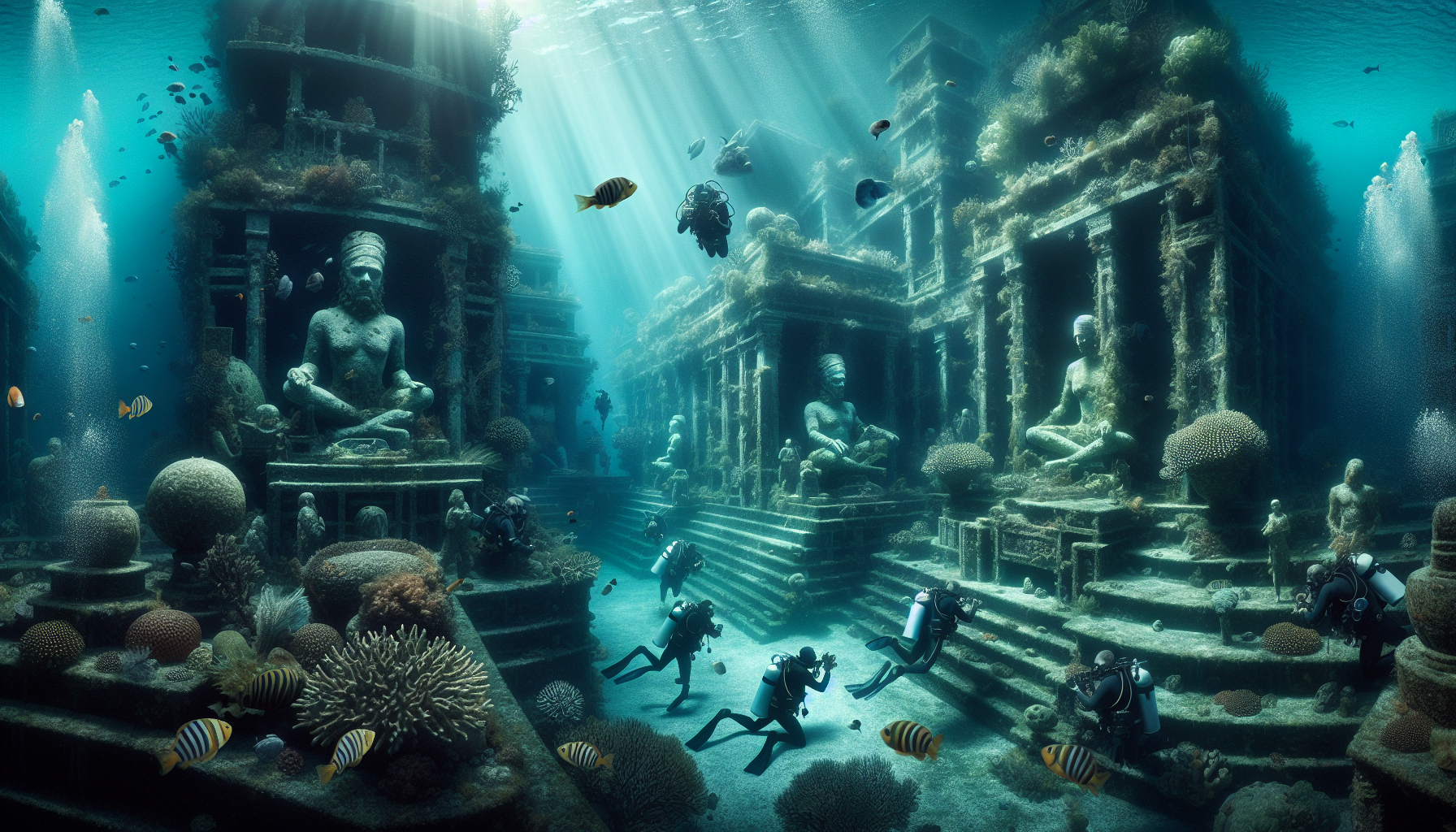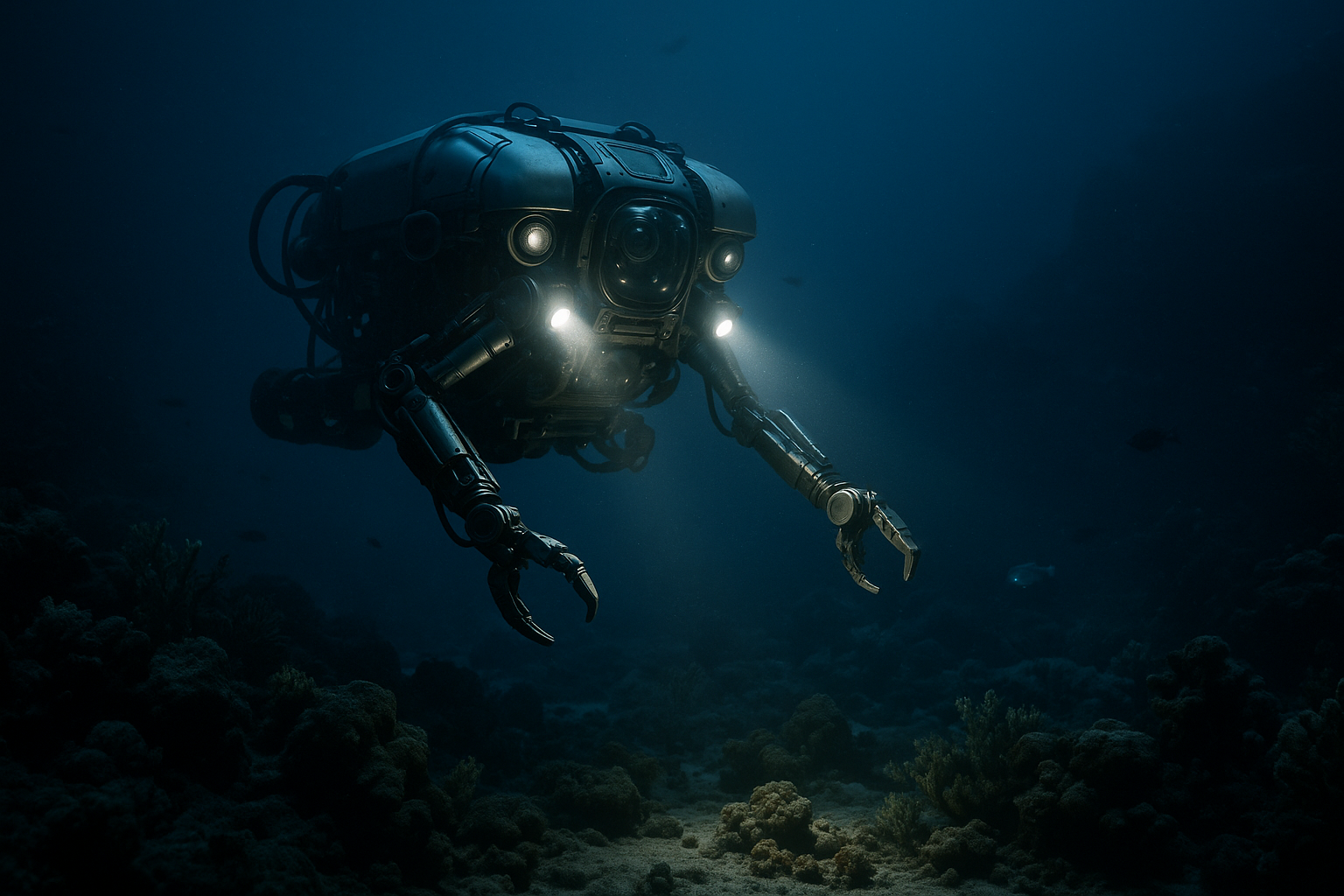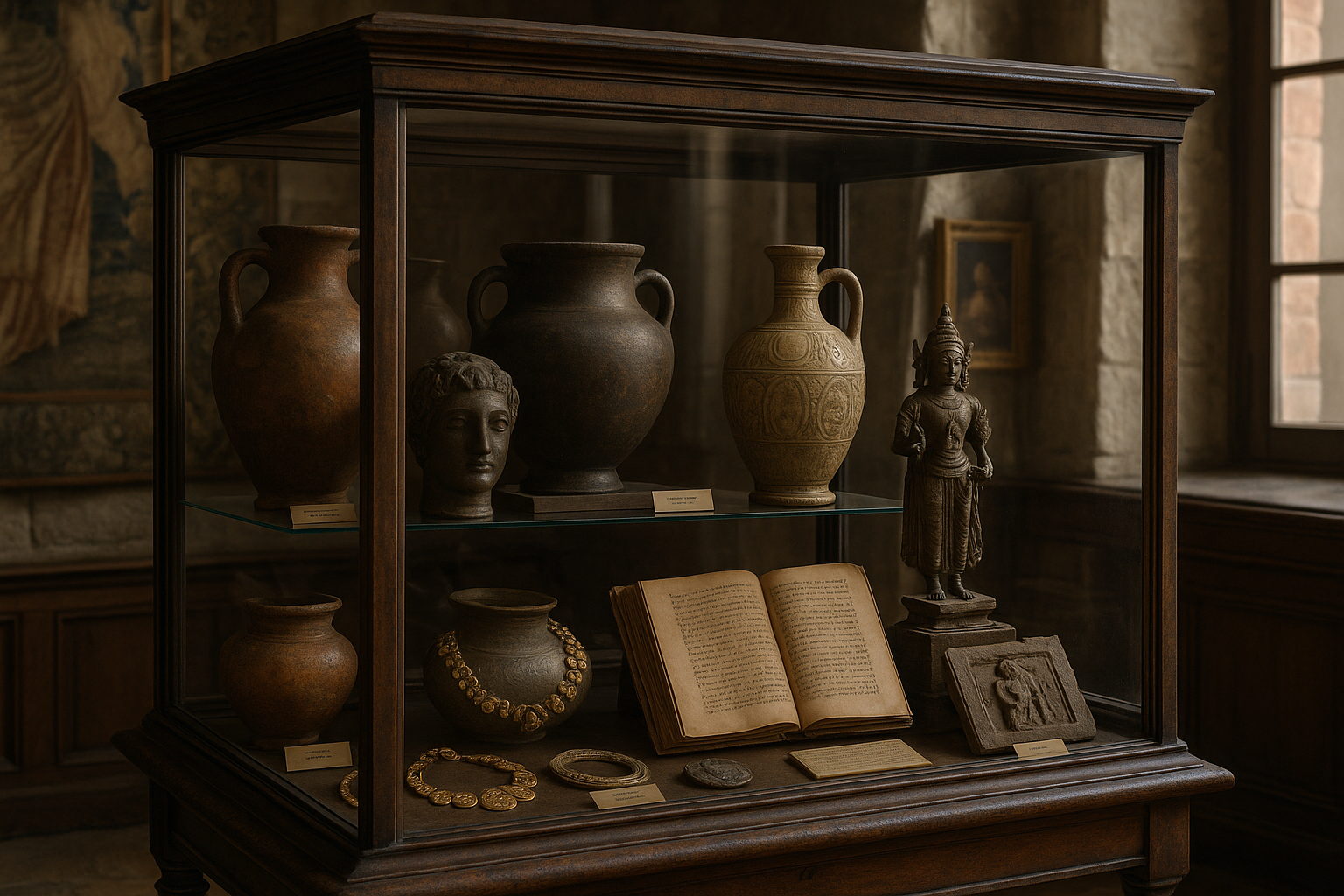Beneath the tranquil surfaces of our world’s oceans, rivers, and lakes lies a realm teeming with history and mystery. From ancient shipwrecks to submerged cities, underwater structures hold secrets of civilizations long past, waiting to be discovered and understood. However, these hidden treasures face a multitude of preservation challenges, threatening to erase them from our collective history forever. The story of these submerged secrets is not just about what we can learn from them, but also about the complex and often daunting task of preserving them for future generations.
Underwater structures present unique preservation challenges that differ significantly from those faced by their terrestrial counterparts. Factors such as water pressure, salinity, and biological activity can accelerate the deterioration of materials, making it a race against time to preserve these cultural artifacts. Additionally, the logistical difficulties of accessing and studying underwater sites add layers of complexity that require innovative solutions and interdisciplinary collaboration. It’s not just a matter of diving deep—it’s about navigating the intricate balance between exploration and conservation. 🌊
As we dive into this topic, we will explore the fascinating world of underwater archaeology, where each discovery brings us closer to understanding the stories of our ancestors. This field requires not only cutting-edge technology but also a deep respect for the delicate ecosystems that coexist with these structures. As we uncover the secrets buried beneath the waves, we must also consider the environmental implications of our actions, ensuring that our quest for knowledge does not come at the expense of marine life.
Moreover, the preservation of underwater structures is not solely the responsibility of archaeologists and scientists. It involves a broader community, including governments, local communities, and international organizations. The legal and ethical considerations surrounding the ownership and protection of these sites are complex and often contentious. Who has the right to claim these submerged treasures? And how do we ensure their protection in international waters? These questions highlight the need for a global dialogue on the stewardship of our underwater cultural heritage.
In this article, we will navigate through the multifaceted challenges of preserving underwater structures, delving into the technological advancements that have revolutionized the field, the environmental considerations that must guide our efforts, and the legal frameworks that govern the seas. Through expert insights and case studies, we aim to shed light on the submerged secrets of our planet and the ongoing efforts to preserve them. As we journey through these topics, our goal is to not only inform but also inspire a deeper appreciation for the hidden histories lying beneath our waters. Dive in with us, and uncover the stories that the oceans have kept for centuries. 🐚
Understanding the Challenges of Preserving Underwater Structures
Underwater structures, ranging from ancient shipwrecks to modern oil rigs, face a unique set of preservation challenges. These challenges stem from the harsh marine environment, which accelerates the degradation of materials, as well as the logistical difficulties in accessing and maintaining these structures. The preservation of such structures is crucial not only for historical and cultural reasons but also for environmental and economic purposes.
The underwater environment is inherently hostile to human-made structures. The combination of saltwater, pressure, temperature fluctuations, and marine life can rapidly deteriorate materials. For instance, metals corrode at a much faster rate underwater due to the presence of salt, while organic materials such as wood are susceptible to decay from marine organisms. The table below provides a comparative look at how different materials are affected by underwater conditions.
MaterialDegradation FactorsPreservation ChallengesMetalCorrosion, Saltwater ExposureRapid rusting, weakening of structureWoodBiological Decay, Marine OrganismsLoss of integrity, biological attackConcreteChloride Penetration, CrackingSpalling, structural failure
Moreover, accessing these underwater structures for preservation work is a logistical challenge in itself. The deep-sea environment requires specialized equipment and skilled divers, making such operations costly and complex. In many cases, remote-operated vehicles (ROVs) are used to inspect and repair these structures, minimizing the risk to human life. For those interested in the intricacies of underwater exploration, check out this engaging video from the National Geographic channel: [Link].
Technological Innovations in Underwater Preservation
The field of underwater preservation has seen significant advancements in recent years, thanks to technological innovations. These innovations have improved the efficiency and effectiveness of preservation efforts, ensuring that underwater structures can withstand the test of time. One of the key advancements is the development of anti-corrosion coatings and cathodic protection systems that extend the lifespan of metal structures submerged in saltwater.
Anti-corrosion coatings are designed to provide a protective barrier against the harsh marine environment. These coatings are applied to the surface of the metal, preventing direct contact with water and, therefore, reducing the rate of corrosion. Cathodic protection, on the other hand, involves the use of sacrificial anodes to redirect the corrosive effects away from the main structure. The table below compares these two approaches.
MethodMechanismAdvantagesDisadvantagesAnti-Corrosion CoatingsPhysical BarrierLong-lasting, easy applicationRegular maintenance requiredCathodic ProtectionElectrical CurrentHighly effective, no direct coating neededComplex installation, expensive
Another noteworthy technological advancement is the use of 3D scanning and modeling techniques to monitor the condition of underwater structures. These techniques allow for precise measurements and the creation of detailed models, which can be used to assess structural integrity and plan maintenance activities. The implementation of artificial intelligence (AI) in analyzing data from these scans further enhances the ability to predict and prevent potential failures. For a visual explanation, be sure to watch this detailed video by the Science Channel: [Link].
Environmental and Cultural Implications
Preserving underwater structures is not merely a technical challenge; it also carries significant environmental and cultural implications. From an environmental standpoint, these structures often serve as artificial reefs, providing habitats for marine life. The degradation of these structures could disrupt local ecosystems and the biodiversity they support. Thus, preservation efforts contribute to marine conservation by maintaining these vital habitats.
Culturally, underwater structures like shipwrecks hold historical significance and offer valuable insights into past civilizations and maritime history. The preservation of these structures allows archaeologists and historians to study them and uncover stories of human endeavors, trade routes, and technological advancements. Moreover, these sites often attract tourists and divers, contributing to local economies. Hence, there is a strong incentive for both governmental and non-governmental organizations to invest in preservation projects.
However, balancing preservation efforts with environmental and cultural considerations can be challenging. For instance, interventions aimed at preserving a structure might inadvertently harm the surrounding marine environment. It is crucial to adopt sustainable practices and conduct thorough impact assessments before undertaking preservation activities. The following list outlines key considerations in this balancing act:
- Environmental Impact Assessments (EIAs) before interventions
- Involvement of marine biologists in planning preservation strategies
- Consideration of the structure’s historical and cultural value
- Engagement with local communities and stakeholders
For further insight into the importance of preserving underwater cultural heritage, watch this informative video by the UNESCO channel: [Link].
Future Prospects and Strategies
Looking ahead, the future of underwater structure preservation lies in the continued integration of technology and sustainable practices. The development of eco-friendly materials and methods will be crucial in minimizing the environmental impact of preservation activities. Additionally, the collaboration between scientists, engineers, archaeologists, and policymakers will ensure a holistic approach to preservation challenges.
One promising area of research is the use of biomimicry to develop materials that mimic the properties of marine organisms. These materials could offer enhanced durability and resistance to marine conditions. Furthermore, advancements in robotics and automation could revolutionize the way preservation tasks are performed, reducing costs and increasing safety.
Public awareness and education will also play a vital role in the success of preservation efforts. By raising awareness of the importance of underwater structures and their preservation, more resources and support can be garnered for these initiatives. To inspire action and engagement, consider watching this thought-provoking video by the Ocean Conservancy: [Link].
Overall, the preservation of underwater structures is a complex but rewarding endeavor. It requires a multidisciplinary approach, innovative technologies, and a deep understanding of both environmental and cultural factors. By addressing these challenges, we can ensure that the submerged secrets of our world continue to captivate and educate future generations. 🌊

Conclusion
In conclusion, the intricate realm of underwater structures presents a fascinating yet formidable array of preservation challenges. Our exploration into this topic has unveiled several critical points that highlight the importance of safeguarding these submerged secrets for future generations.
Firstly, we examined the historical significance of underwater structures, ranging from ancient shipwrecks to submerged cities, which serve as invaluable time capsules preserving human history. These structures offer unique insights into past civilizations, trade routes, and technological advancements, underscoring their cultural and educational value.
Secondly, we delved into the myriad environmental challenges these structures face. The relentless forces of water, from corrosive salt to powerful currents, pose significant threats to the integrity of submerged artifacts. Additionally, the burgeoning impacts of climate change, including rising sea levels and ocean acidification, exacerbate these challenges, making preservation efforts increasingly urgent.
Furthermore, we discussed the technological advancements and innovative strategies employed to mitigate these threats. From 3D mapping and sonar imaging to advanced materials for preservation, the field is witnessing a remarkable convergence of technology and archaeology. These tools not only aid in the conservation process but also enhance our understanding of these underwater treasures.
Importantly, we highlighted the ethical and legal considerations surrounding the preservation of underwater structures. International collaboration and robust legal frameworks are crucial in protecting these sites from looting, unauthorized exploration, and exploitation. These efforts ensure that underwater cultural heritage is preserved in a manner that respects its historical significance and integrity.
The preservation of underwater structures is not merely a task for scientists and archaeologists; it is a collective responsibility that requires global awareness and engagement. By raising public consciousness about the value and vulnerability of these submerged wonders, we can foster a culture of preservation and respect for our shared heritage.
We encourage you, dear reader, to reflect on the importance of these underwater structures and consider how you might contribute to their preservation. Whether through advocacy, education, or simply sharing this knowledge within your community, every effort counts. Together, we can ensure that these submerged secrets continue to inspire and inform for generations to come.
Feel free to leave a comment below sharing your thoughts or experiences related to underwater structures. Your insights and engagement are invaluable as we navigate the challenges of preserving these hidden treasures. Additionally, consider sharing this article with others who might be interested in the intriguing world of underwater archaeology. By spreading awareness, we can collectively enhance the preservation efforts for these vital remnants of human history.
Let us champion the cause of underwater preservation with enthusiasm and dedication, ensuring that these submerged secrets are not lost to the tides of time but are celebrated as vital links to our past. 🌊
For further reading and exploration into this topic, we recommend the following resources:
– UNESCO’s Underwater Cultural Heritage [Link to UNESCO site]
– National Geographic’s Underwater Archaeology [Link to National Geographic site]
Thank you for joining us on this journey beneath the waves. May the stories and lessons uncovered inspire you to become an advocate for the preservation of our shared underwater heritage.
—
Please note that the links should be verified for accuracy and relevance to ensure they lead to active pages with the appropriate content.
Toni Santos is a visual storyteller and archival artist whose work dives deep into the submerged narratives of underwater archaeology. Through a lens tuned to forgotten depths, Toni explores the silent poetry of lost worlds beneath the waves — where history sleeps in salt and sediment.
Guided by a fascination with sunken relics, ancient ports, and shipwrecked civilizations, Toni’s creative journey flows through coral-covered amphorae, eroded coins, and barnacle-encrusted artifacts. Each piece he creates or curates is a visual meditation on the passage of time — a dialogue between what is buried and what still speaks.
Blending design, storytelling, and historical interpretation, Toni brings to the surface the aesthetics of maritime memory. His work captures the textures of decay and preservation, revealing beauty in rust, ruin, and ruin’s resilience. Through his artistry, he reanimates the traces of vanished cultures that now rest on ocean floors, lost to maps but not to meaning.
As the voice behind Vizovex, Toni shares curated visuals, thoughtful essays, and reconstructed impressions of archaeological findings beneath the sea. He invites others to see underwater ruins not as remnants, but as thresholds to wonder — where history is softened by water, yet sharpened by myth.
His work is a tribute to:
The mystery of civilizations claimed by the sea
The haunting elegance of artifacts lost to time
The silent dialogue between water, memory, and stone
Whether you’re drawn to ancient maritime empires, forgotten coastal rituals, or the melancholic beauty of sunken ships, Toni welcomes you to descend into a space where the past is submerged but never silenced — one relic, one current, one discovery at a time.




